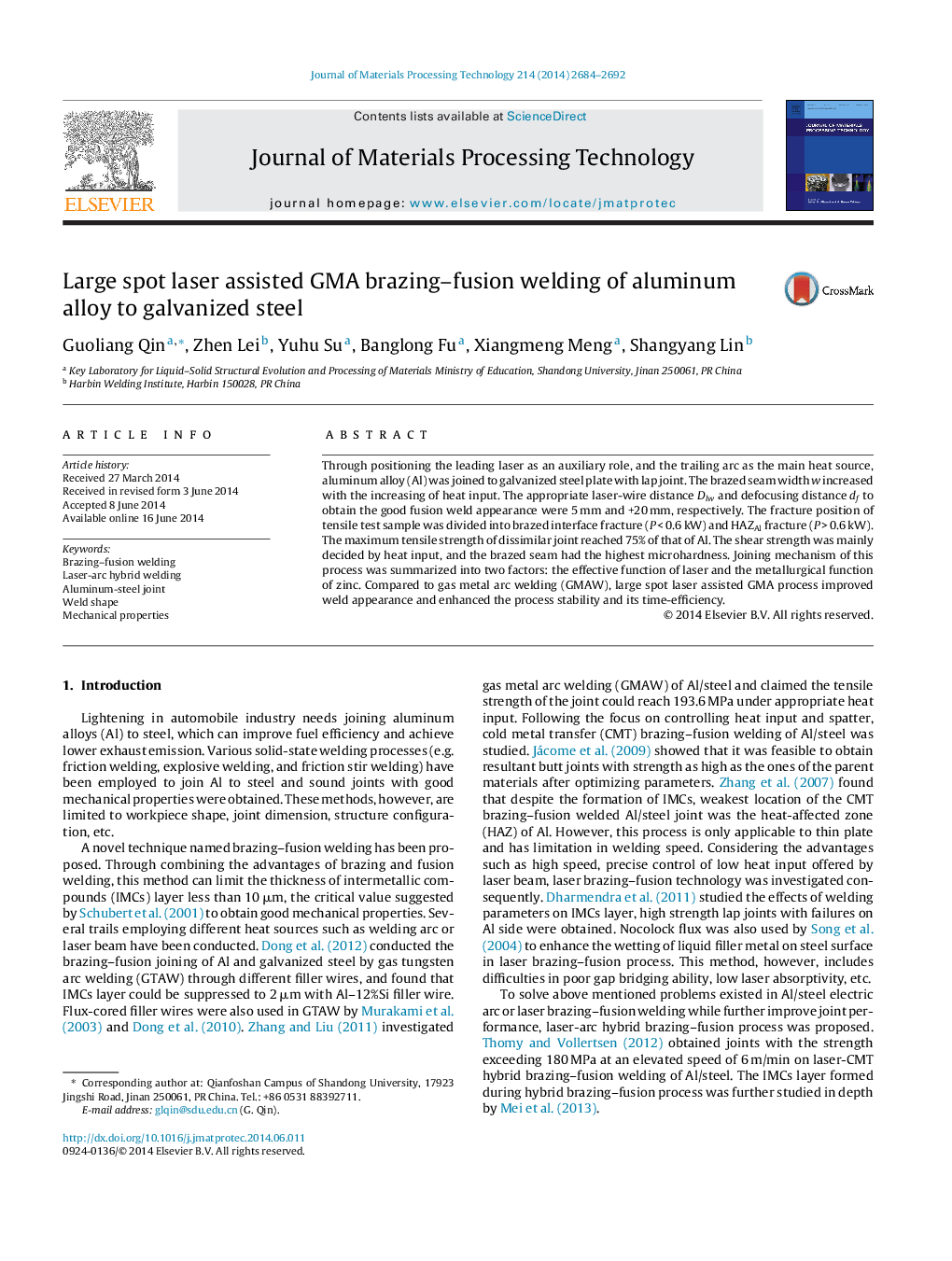| Article ID | Journal | Published Year | Pages | File Type |
|---|---|---|---|---|
| 10417403 | Journal of Materials Processing Technology | 2014 | 9 Pages |
Abstract
Through positioning the leading laser as an auxiliary role, and the trailing arc as the main heat source, aluminum alloy (Al) was joined to galvanized steel plate with lap joint. The brazed seam width w increased with the increasing of heat input. The appropriate laser-wire distance Dlw and defocusing distance df to obtain the good fusion weld appearance were 5Â mm and +20Â mm, respectively. The fracture position of tensile test sample was divided into brazed interface fracture (PÂ <Â 0.6Â kW) and HAZAl fracture (PÂ >Â 0.6Â kW). The maximum tensile strength of dissimilar joint reached 75% of that of Al. The shear strength was mainly decided by heat input, and the brazed seam had the highest microhardness. Joining mechanism of this process was summarized into two factors: the effective function of laser and the metallurgical function of zinc. Compared to gas metal arc welding (GMAW), large spot laser assisted GMA process improved weld appearance and enhanced the process stability and its time-efficiency.
Related Topics
Physical Sciences and Engineering
Engineering
Industrial and Manufacturing Engineering
Authors
Guoliang Qin, Zhen Lei, Yuhu Su, Banglong Fu, Xiangmeng Meng, Shangyang Lin,
